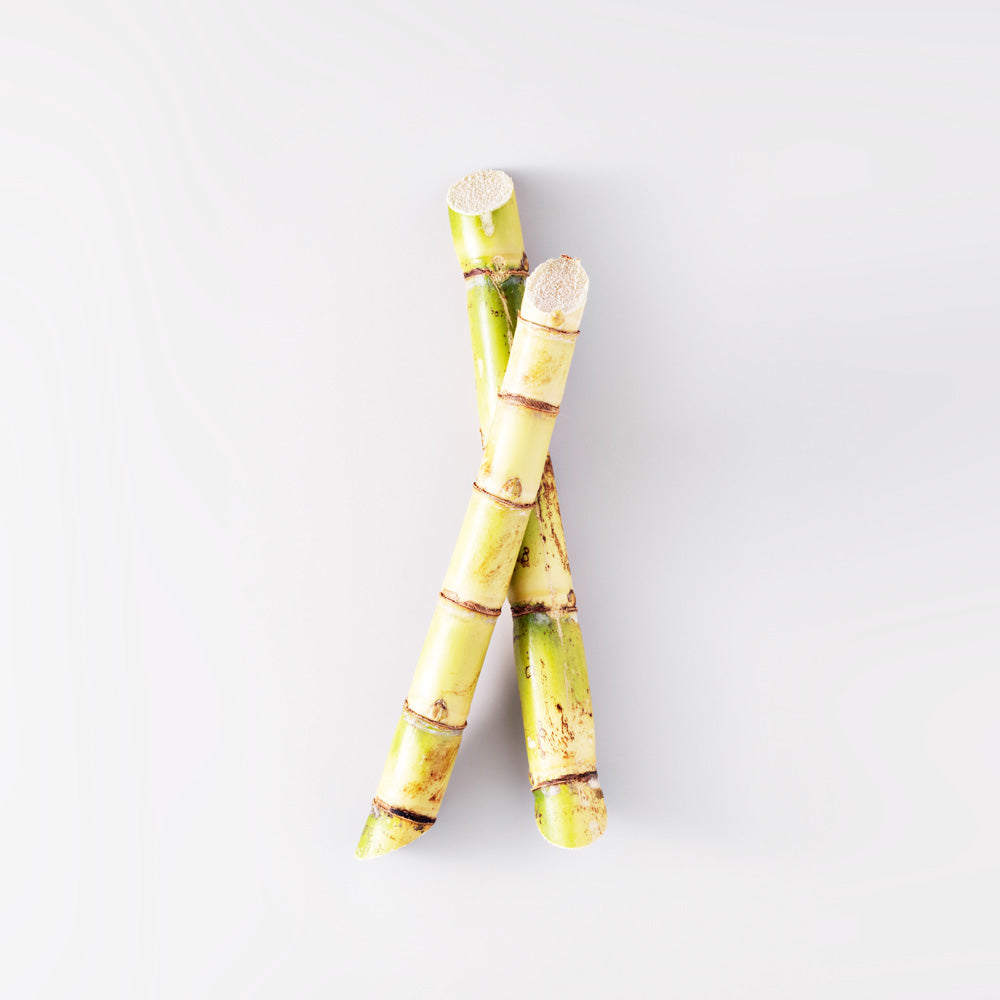Cane Sugar Processing: From Area to Table-- A Step-by-Step Overview
Cane Sugar Processing: From Area to Table-- A Step-by-Step Overview
Blog Article
A Comprehensive Guide to the Ecological Influence and Sustainability Practices in Cane Sugar Processing
The environmental impact of walking stick sugar handling presents an intricate array of obstacles that warrant mindful evaluation. From dirt destruction and too much water use to the carbon footprint linked with farming and manufacturing, the consequences of typical techniques are far-ranging. What details methods can be implemented to strike an equilibrium in between productivity and ecological stewardship?
Overview of Cane Sugar Processing
Cane sugar handling involves a collection of methodical steps that transform sugarcane into refined sugar. Originally, harvested sugarcane is delivered to refining centers, where it goes through cleaning to remove dirt and particles. Following this, the cane is crushed to extract juice, which is after that made clear by eliminating impurities with home heating and the addition of lime.
The made clear juice undertakes evaporation, where water is removed to focus the sugar material. This focused syrup is after that crystallized via air conditioning, enabling sugar crystals to create. These crystals are separated from the remaining syrup utilizing centrifugation, causing raw sugar. To achieve refined sugar, the raw product undergoes further purification processes, which might consist of cleaning and filtering system to get rid of continuing to be impurities and shade.
The last item is after that dried out and packaged for circulation. Throughout this whole procedure, preserving performance and high quality control is necessary to make sure the sugar satisfies sector criteria. Each step in cane sugar processing not just contributes to the final item but additionally has implications for resource usage and waste generation, establishing the stage for conversations on sustainability and environmental influences connected with sugar production.
Ecological Difficulties of Production
The manufacturing of walking stick sugar presents a number of considerable ecological difficulties that warrant interest. One primary issue is the comprehensive use of agrochemicals, consisting of pesticides and fertilizers, which can result in soil degradation, biodiversity loss, and contamination of local water sources. The drainage from sugarcane areas typically carries these chemicals into close-by ecological communities, disrupting marine life and affecting the health and wellness of communities reliant on these water bodies.
Another difficulty is the high power intake related to sugarcane processing. The boiling and refining phases require considerable warmth, largely produced by burning nonrenewable fuel sources, adding to greenhouse gas exhausts. In addition, the large acreage required for sugarcane farming can lead to deforestation and habitat destruction, more aggravating climate change and threatening wildlife.
Moreover, the labor practices in some regions elevate moral concerns, as workers might face bad working conditions and inadequate salaries. This circumstance often perpetuates a cycle of poverty in regional neighborhoods. Cane Sugar Processing. Addressing these ecological difficulties is critical for developing much more sustainable techniques in cane sugar manufacturing, eventually benefiting both the setting and the communities associated with this industry
Water and Land Use Impact
Water sources and land use are vital components in the cane sugar industry that significantly influence the atmosphere. The growing of sugarcane calls for substantial water input, with quotes suggesting that it can take in approximately 2,000 litres of water per kg of sugar generated. This extensive usage of water commonly leads to depletion of local water resources, influencing not only the sugarcane ranches yet likewise surrounding ecological communities and areas that rely upon the very same water resources for farming and residential usage.

Furthermore, land use for sugarcane cultivation can lead to logging and the conversion of natural habitats into monoculture ranches. visit this site right here This method decreases biodiversity, interrupts local environments, and adds to soil degradation. The development of sugarcane areas frequently trespasses on beneficial agricultural land, creating competition for sources in between food and biofuel manufacturing.
Sustainable techniques, such as maximizing irrigation methods and executing plant turning, are necessary to reduce these influences. By adopting more efficient water usage and land monitoring approaches, the why not try this out walking stick sugar market can lower its ecological footprint, guaranteeing a balance between farming performance and environmental preservation.
Greenhouse Gas Emissions
Greenhouse gas emissions stand for a substantial environmental concern within the walking cane sugar processing sector, specifically as agricultural methods broaden to fulfill international need. The farming of sugarcane, a plant that thrives in exotic environments, counts heavily on artificial plant foods and chemicals, which add to nitrous oxide discharges. In addition, land-use changes, consisting of deforestation for brand-new sugarcane plantations, release carbon dioxide saved in vegetation and dirt.
Throughout processing, energy intake is another major source of greenhouse gas discharges - Cane Sugar Processing. Lots of sugar mills use nonrenewable fuel sources to power machinery and generate warmth, resulting in substantial carbon impacts. Additionally, the transport of raw sugarcane and completed products adds layers of emissions with fuel combustion in automobiles
This involves examining present agricultural methods, refining techniques, and transportation systems to recognize areas for improvement and mitigation. Attending to greenhouse gas discharges is necessary for promoting a much more sustainable cane sugar sector in a transforming environment.

Lasting Practices and Innovations
Sustainable methods and innovations are progressively crucial in the cane sugar processing sector as stakeholders seek to lower environmental influences while preserving performance. One considerable advancement is the application of incorporated plant management, which optimizes source use by integrating dirt administration, insect control, and crop rotation methods. This approach improves yield while decreasing chemical inputs and protecting soil health and wellness.
Furthermore, the fostering of sustainable power resources, such as biomass from sugarcane deposits, has actually gained traction - Cane Sugar Processing. By converting waste items right into power, refining centers can reduce their reliance on fossil gas, therefore decreasing greenhouse gas discharges
Water administration methods have actually additionally seen renovations via the recycling and reusing of water in handling plants, substantially minimizing freshwater consumption. Developments in technology, such as precision agriculture, allow farmers to keep an eye on crop health and their website resource use extra effectively, ensuring sustainable farming techniques.
Furthermore, qualification programs like Fair Profession and Jungle Partnership urge environmentally accountable farming methods and advertise social equity within the supply chain. By embracing these lasting techniques and developments, the walking cane sugar processing industry can boost its durability and contribute favorably to environmental stewardship.
Verdict
The ecological effect of walking stick sugar handling provides substantial difficulties, including soil deterioration, high water consumption, and greenhouse gas emissions, together with moral concerns connected to labor methods. Dealing with these problems with sustainable techniques, such as integrated crop management, renewable resource fostering, and water recycling, is crucial. By promoting socially equitable and environmentally responsible techniques in sugar production, the sector can mitigate its damaging impacts, making sure a much more lasting future for both ecosystems and areas entailed in this field.
Cane sugar processing includes a series of organized actions that transform sugarcane right into polished sugar. Each step in walking cane sugar processing not only adds to the last item but also has ramifications for resource use and waste generation, setting the phase for discussions on sustainability and environmental impacts associated with sugar production.
Greenhouse gas discharges represent a substantial ecological concern within the cane sugar processing industry, specifically as farming techniques increase to meet global need.Lasting practices and developments are increasingly essential in the cane sugar processing sector as stakeholders look for to lower ecological effects while maintaining efficiency.The environmental effect of cane sugar handling provides significant challenges, including dirt deterioration, high water intake, and greenhouse gas exhausts, along with honest issues associated to labor practices.
Report this page